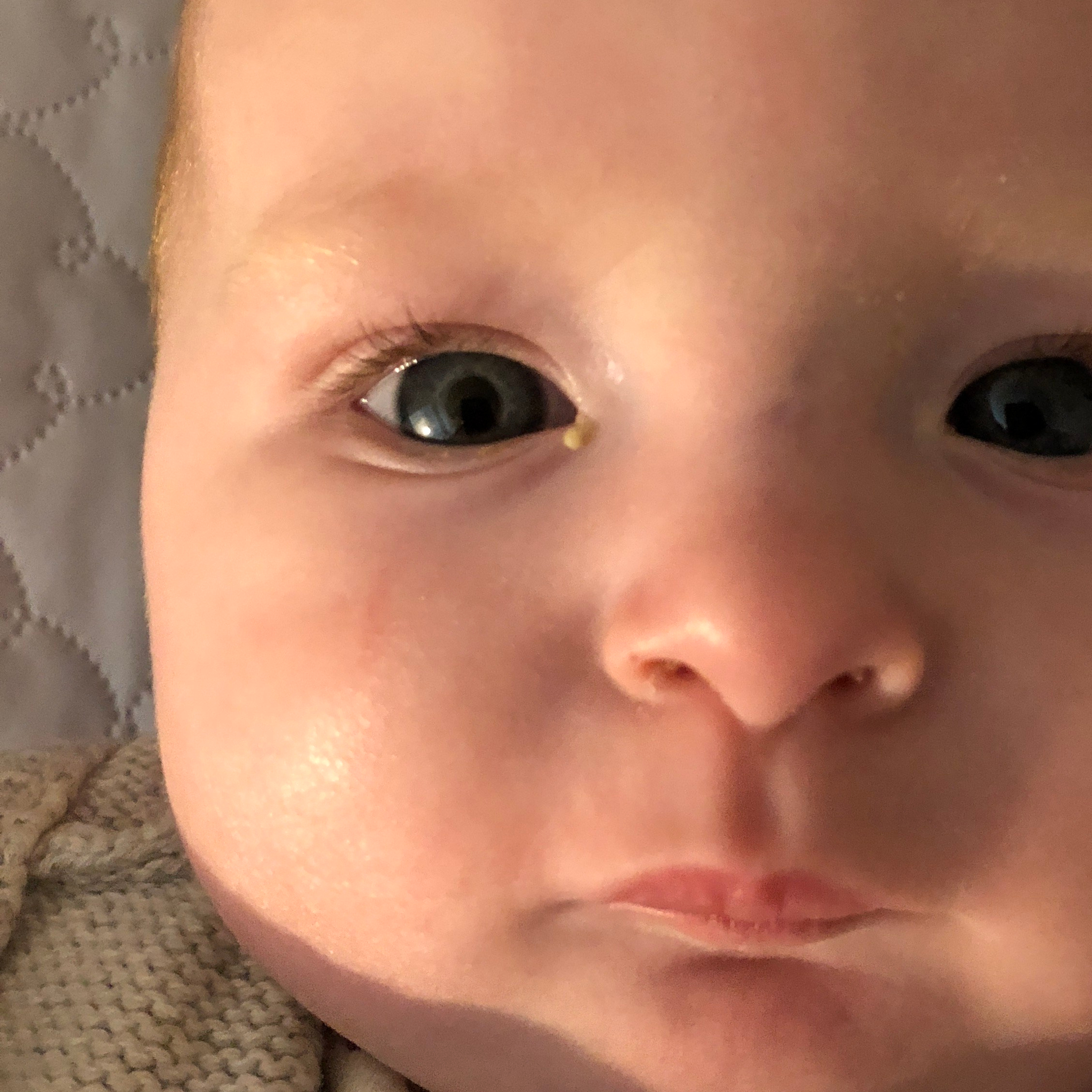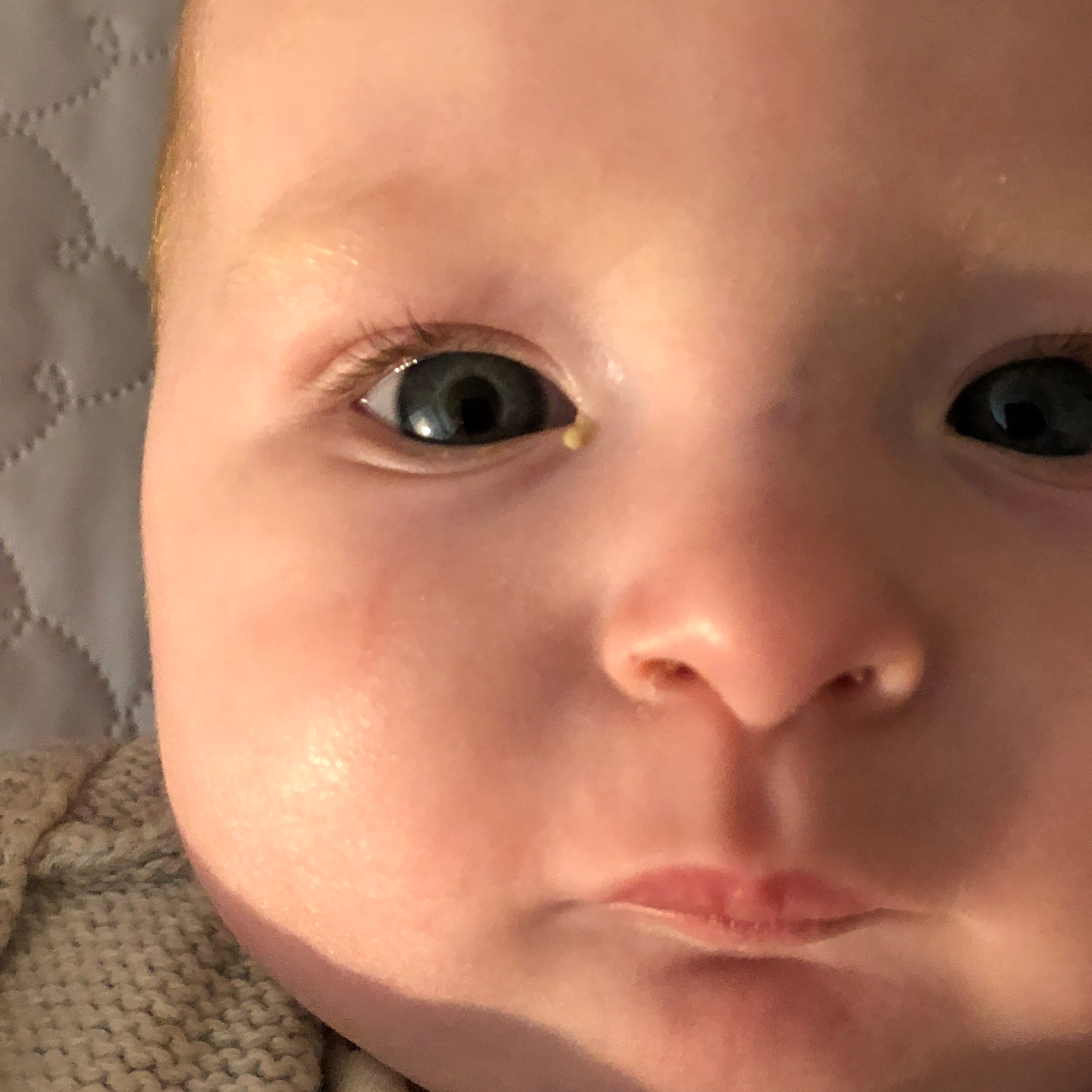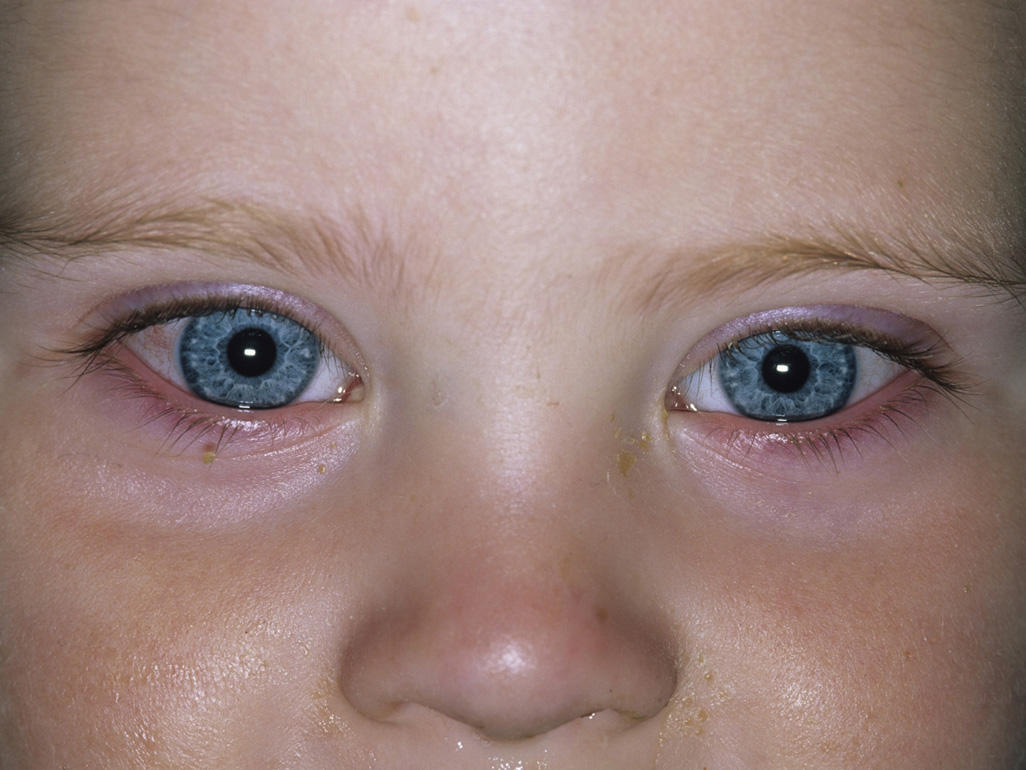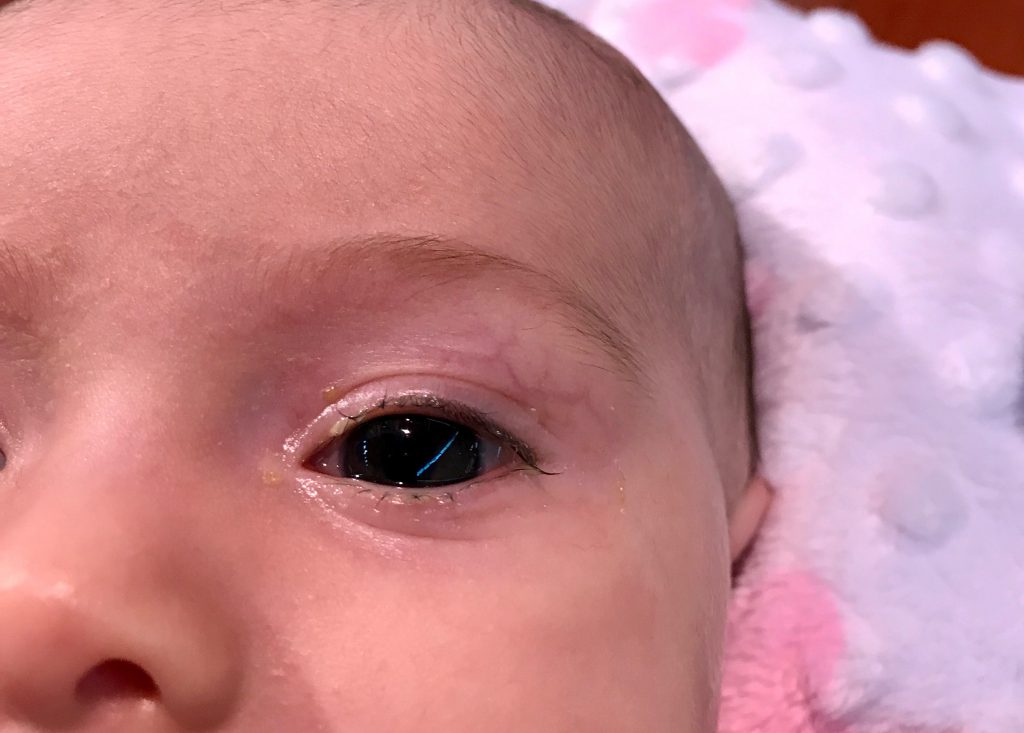Conjunctivitis (Pinkeye) In Babies

Contents:
- What Is Conjunctivitis (Pinkeye)?
- Conjunctivitis In Children
- Causes Of Conjunctivitis In Babies
- Symptoms Of Conjunctivitis In Baby
- Bacterial Conjunctivitis In Children
- Viral Conjunctivitis In Children
- Diagnostic Of Pinkeye
- Treatment Of Conjunctivitis In Children
- Prevention Of Conjunctivitis
What Is Conjunctivitis (Pinkeye)?
Conjunctivitis (also called Pinkeye) is a disease of the anterior segment of the eye, characterized by the inflammatory reaction of the conjunctiva to the infectious or allergic stimulants. Conjunctivitis may cause such symptoms as hyperemia, edema of the mucous membrane of an eye, lacrimation, photophobia, burning and discomfort in the eyes and the mucous or purulent discharge from the conjunctiva.
Conjunctivitis is diagnosed by carrying out the ophthalmic examination (checkup of an ophthalmologist, biomicroscopy of the eye and microbiological, cytological, virological and immunological examination of the conjunctival discharge). Conjunctivitis is commonly treated with eye drops and ointments.
Conjunctivitis In Children
Conjunctivitis is an inflammatory infection of the mucous membrane that may have different etiology. Cases of conjunctivitis in children during the first 4 years of life amount to 30% of all cases of eye pathologies. This rate progressively reduces with age. However, the refraction error (astigmatism, nearsightedness, and farsightedness) increases and predominates in pediatric ophthalmology. Conjunctivitis in childhood may lead to the development of such serious complications, as visual impairment, keratitis, dacryocystitis, and phlegmon of the lacrimal sacs. In this regard, conjunctivitis in early age requires particular attention of specialists − pediatrician, ophthalmologist and allergist.
Causes Of Conjunctivitis In Babies

Most often, children suffer from viral, bacterial, or allergic conjunctivitis and each type of the disease has its specific course.
Bacterial conjunctivitis in is the most diagnosed case in pediatrics. Depending on the causative agent, conjunctivitis can be staphylococcal, pneumococcal, streptococcal, diphtheria and acute epidemic (caused by Koch-Weeks bacillus).
Gonococcal and chlamydial conjunctivitis in newborns refer to the group of bacterial eye infections. It occurs due to the contamination of a baby while passing through the birth canal of a mother infected by a venereal disease (gonorrhea, chlamydiosis).
Bacterial conjunctivitis in children may occur not only by infection from external germs, but also due to the increased pathogenicity of microflora of an eye or the presence of purulent-septic diseases (otitis, tonsillitis, sinusitis, omphalitis, pyodermia, etc.).
Lacrimal fluid contains immunoglobulins, components of complement, lactoferrin, lysozyme and beta-lysine, and thus possesses a certain antibacterial effect. However, conjunctivitis can occur due to weakening of the immunity, mechanical eye damage or the obstruction of the nasolacrimal duct.
Viral conjunctivitis in children may develop as a result of flu, adenovirus infections, herpes simplex virus, enterovirus infections, measles, chickenpox etc. In this case, in addition to the conjunctivitis symptoms children may have common symptoms of rhinitis or pharyngitis. Conjunctivitis in children is affected not only by the particular causative agents but also by their associations – bacteria and viruses.
Allergic conjunctivitis accompanies over 90% of all allergic diseases and is often combined with allergic rhinitis, pollinosis, atopic dermatitis, and bronchial asthma. The development of an allergic reaction in the conjunctiva can be caused by food, drugs, pollen, dust, bacteria, virus, fungal, parasites and other allergens.
Frequent occurrence of conjunctivitis among children is due to their physiology and socialization. The infection in children can spread rapidly by contact or airborne. During the incubation period, the child carrying the infection continues to communicate with other children. Thus, he can contaminate a large number of people that he is in contact with. Conjunctivitis can also be affected by such factors as dry air, bright light, or poor diet.
Symptoms Of Conjunctivitis In Baby
Conjunctivitis may be isolated, but sometimes it can be accompanied by catarrhal symptoms as well. Any type of conjunctivitis triggers a set of symptoms: eyelid edema, conjunctival hyperemia, increased eye watering, sensitivity to light, sensation of foreign body in the eye, pain and winking spasm.
Eye infection in babies can be discovered before the appearance of the main symptoms by their restless behavior, frequent crying, and constant eye rubbing with the fists.
If conjunctivitis is isolated, the temperature is usually normal or low-grade. In cases where infection is present, the temperature may rise to high level.
Visual function may slightly reduce because of the thickening of the conjunctiva during the disease. However, this defect is temporary and reversible, with proper treatment, the vision can be restored immediately after recovery.
Bacterial Conjunctivitis In Children

In cases of bacterial conjunctivitis, the eye damage is commonly bilateral. Most often, it occurs sequentially: at first, the infection contaminates one eye and after 1-3 days the other eye. Typical signs of bacterial conjunctivitis are mucous-purulent or purulent discharge from the conjunctiva, glued eyelids and dry crusts on the eyelashes. The color of the discharge may vary from light yellow to yellow-green.
Bacterial conjunctivitis may be sometimes complicated by blepharitis or keratoconjunctivitis. Deep keratitis and corneal ulcers occur seldom. Its occurrence can be affected by the weakening of organism−hypovitaminosis, anemia, hypotrophy, bronhoadenitis, etc.
Gonococcal conjunctivitis (gonorrheal conjunctivitis) in newborns may occur 2-3 day after birth. The symptoms of gonorrheal conjunctivitis are dense swelling of the eyelids, bluish-purple color of the skin, infiltration and hyperemia of the conjunctiva, first with serosanguineous and then with abundant purulent discharge.
In cases of gonococcal conjunctivitis in children, there is a high risk of purulent infiltration and corneal ulcer, prone to perforation. It can lead to the formation of leukoma, sudden loss of vision or blindness. The penetration of the infection to the inner parts of an eye may lead to the development of endophthalmitis or panophthalmitis.
Chlamydial conjunctivitis in babies may develop 5-10 day after birth. In older children, the infection can occur in closed water basins. These outbreaks of the disease are referred to the group of basin conjunctivitis. The disease pattern is characterized by hyperemia and infiltration of the mucous membrane of the eyelids, ptosis, and the presence of purulent copious liquid secretion in the conjunctival cavity and the hypertrophy of the papillae. Children may also have other manifestations of the infection in the form of pharyngitis, otitis, pneumonia, vulvovaginitis, etc.
Diphtheria conjunctivitis usually develops on the background of diphtheria, especially in children under 4 years. Currently, due to the compulsory vaccination of children against diphtheria, the cases of infection have become rare.
The disease is characterized by painful swelling and induration of the eyelid with muddy serousanguineous secretion, which discharges while spreading the eyelids. On the surface of the conjunctiva there are grey, rigid membranes. The surface exposes and may bleed after their removal. Complications of diphtheria conjunctivitis may include infiltration and ulceration of the cornea, corneal clouding, ulcer perforation and the loss of eye.
Viral Conjunctivitis In Children
Viral conjunctivitis, which usually accompanies acute respiratory viral infections (ARVI), is characterized by a high temperature and catarrhal symptoms. In these cases, the eye inflammation occurs sequentially. The symptom of viral conjunctivitis is abundant liquid watery discharge from the conjunctival sac that creates an impression of constant tearing.
In cases of herpes simplex virus conjunctivitis (HSV Conjunctivitis), there are rashes in the form of the bubbles on the skin of eyelids and conjunctiva. In cases of measles conjunctivitis−there are morbilliform rashes; in cases of chickenpox−smallpox pustules, which may transform into scars after opening. Sometimes, viral conjunctivitis is complicated by the bacterial infection, which is accompanied by the appearance of purulent discharge in the eyes.
Diagnostic Of Pinkeye
Diagnostic of conjunctivitis requires knowing the medical history of a child, examination of an ophthalmologist (allergist and immunologist, if necessary) and carrying out a special ophthalmologic and laboratory examination.
The examination of the eyes includes external examination, investigation using lateral illumination and biomicroscopy. The investigatory etiological diagnostic of the disease is made by taking a smear test from the conjunctiva. The final diagnosis is made after carrying out the bacteriological, virological, immunological and serological examination.
To be diagnosed for allergic conjunctivitis, a child should pass the analyses determining immunoglobulin E (IgE) and eosinophil levels, skin allergy, dysbacteriosis and helminthic infection presence.
Treatment Of Conjunctivitis In Children

A child infected by bacterial or viral conjunctivitis should be isolated from healthy children. Consult your pediatric ophthalmologist or pediatrician for choosing the proper treatment. Self-treatment of conjunctivitis in children is unsafe. It is forbidden to put bandages on eyes and to apply compresses, as it promotes the reproduction of pathogens and the inflammation of the cornea.
It is recommended to rinse the eyes with chamomile decoction, nitrofural solution and boric acid. It is necessary to wipe out the eyes 4-8 times a day using a cotton wool pad in the direction from the outer corner to the inner. The basis of the treatment of conjunctivitis in children is the application of eye drops and ointments.
Treatment of bacterial conjunctivitis should be performed for both eyes with antibacterial drugs (drops with chloramphenicol, fusidic acid, tetracycline, erythromycin and ofloxacin ointments, etc.). In cases of viral conjunctivitis it is recommended to use antiviral medications for eyes (e.g. ophthalmoferon, oxolinic ointment, etc.).
Prevention Of Conjunctivitis
High prevalence and transmissibility of conjunctivitis among children requires its early diagnostic, proper treatment and prevention. The main measures in the prevention of conjunctivitis in children should be following the rules of hygiene, taking care of the items of the newborns, isolation from sick children, disinfection of rooms and furniture, increasing the resistance of the organism to the infection.
Prevention of conjunctivitis in newborns lies in early identification and curing of urogenital infections in pregnant women and antiseptic treatment of the birth canal and the eyes of babies immediately after birth.